Inside the Derelict Old St Giles' and St George's School, Newcastle, Staffs.

This was the first time I'd been inside the old St Giles' & St George's School building since I left primary school in the 90s. I've seen it slowly decaying from the outside in recent years.
It felt quite strange wandering around - it was familiar, but I barely had any memory of the layout. I expected it to look smaller because I'm bigger now, but it still seemed a lot smaller than I expected. It was sad to see it in a derelict state - holes in the roof with water leaking through, plaster peeling off everywhere, and vandalism. Whoever is responsible for the eerie graffiti is a talented artist(s) though. I like that it's location-appropriate, so they must be a former pupil (or teacher). The "You've been naughty" girl is where we had to sit if we'd been naughty...
Skip to: Former pupil memories School history Leave a comment
Photos
School girl and "You've been naughty" graffiti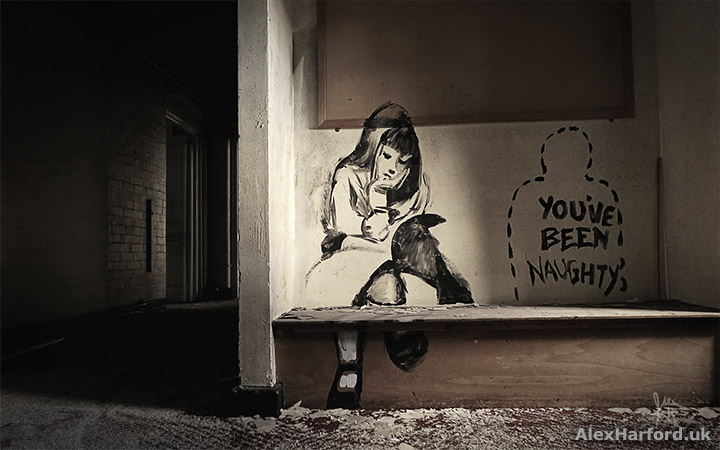 "Oi! Go to the Headmaster" graffiti
"Oi! Go to the Headmaster" graffiti
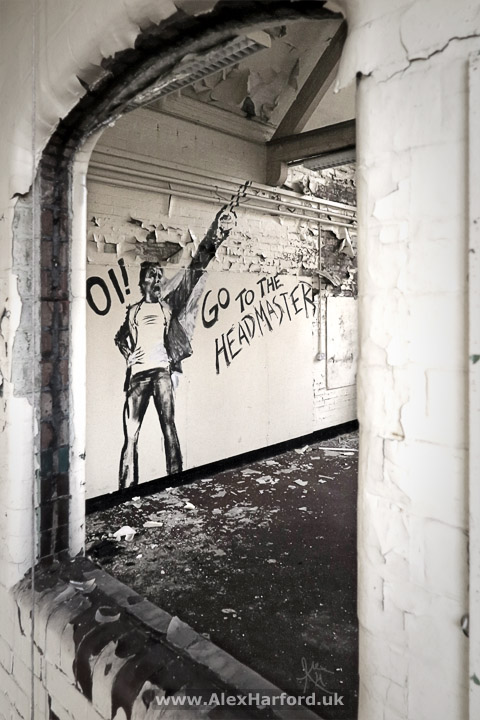 In my memory, the dining and assembly rooms were separate, but I think this room was both?
In my memory, the dining and assembly rooms were separate, but I think this room was both?
 I guess this was the staff room
I guess this was the staff room
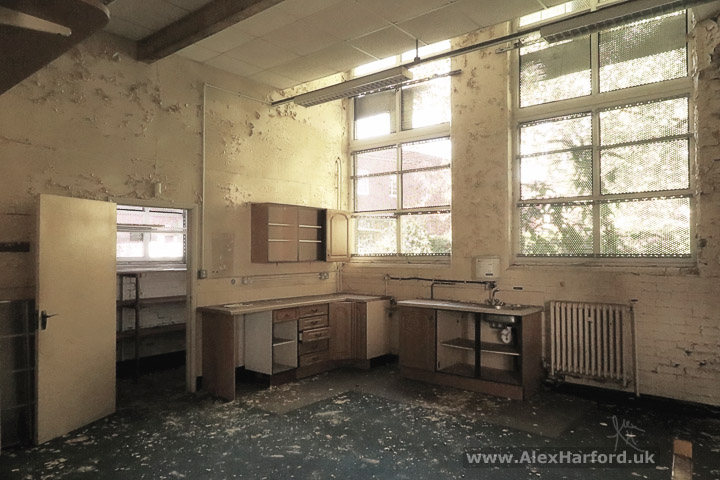 View from the kitchen, which seems small considering the amount of pupils and staff it catered for
View from the kitchen, which seems small considering the amount of pupils and staff it catered for
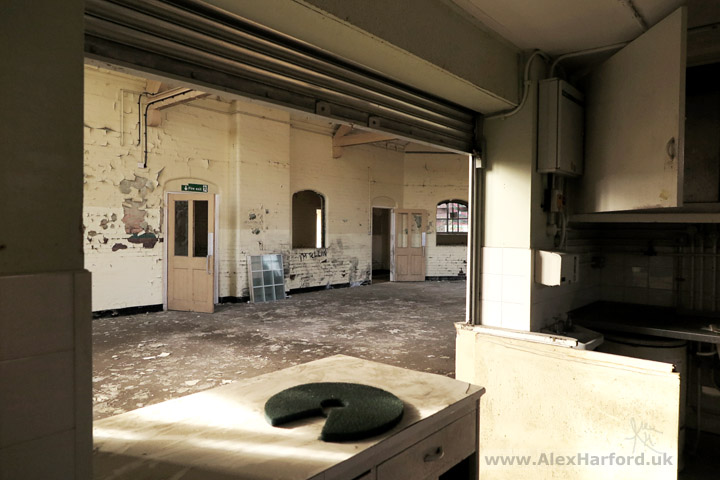 Remains of "The Lunch Bunch" poster on the dining room floor
Remains of "The Lunch Bunch" poster on the dining room floor
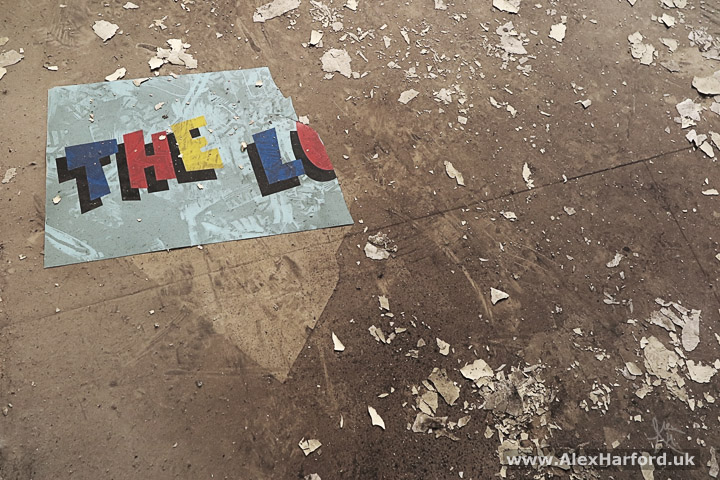 I'm sure there was a Lunch Bunch poster when I was at the school, so it's quite impressive if the same one has lasted all this time
I'm sure there was a Lunch Bunch poster when I was at the school, so it's quite impressive if the same one has lasted all this time
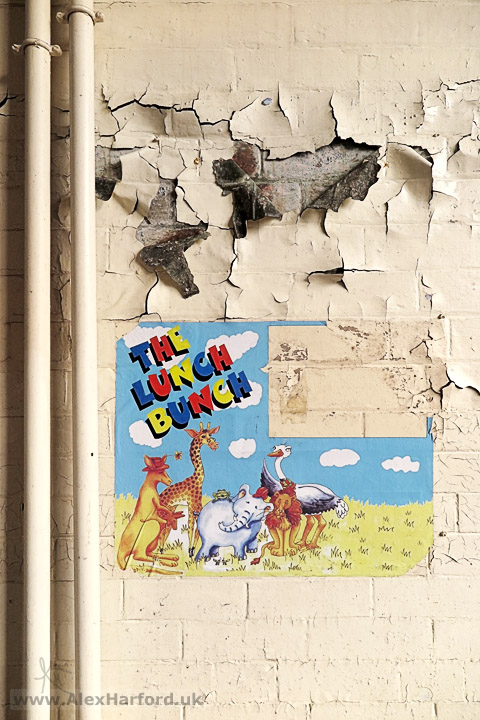 Broken toilet
Broken toilet
 Holes in the roof and a row of 3-foot-high coat hangers to the right (just past the first doorway)
Holes in the roof and a row of 3-foot-high coat hangers to the right (just past the first doorway)
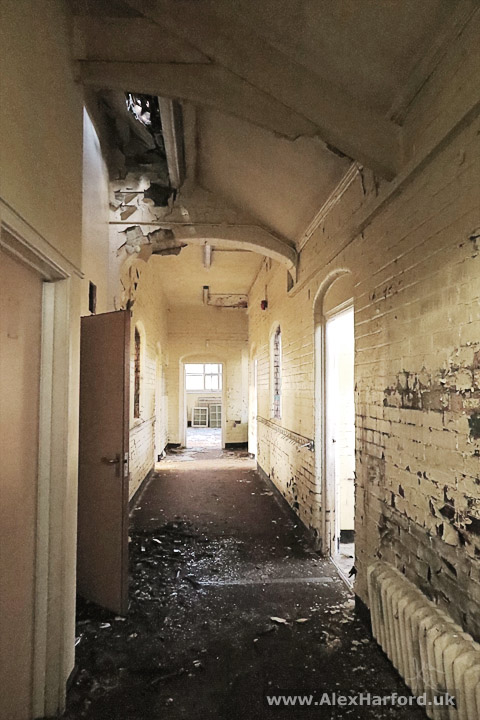 A classroom
A classroom
 Another classroom
Another classroom
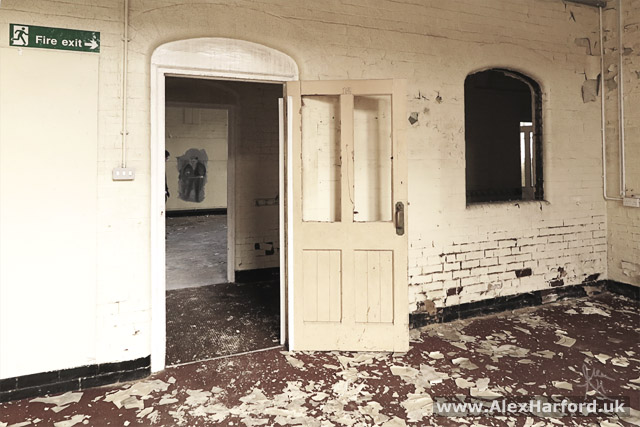 "Got ya!" graffiti
"Got ya!" graffiti
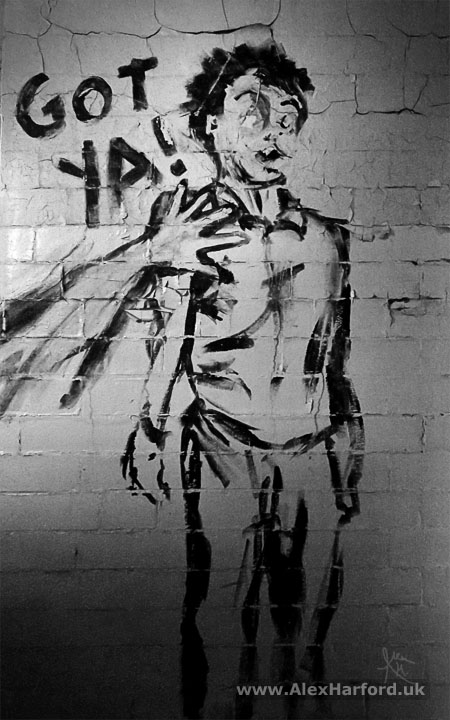 View from the room at the end of the corridor photo above
View from the room at the end of the corridor photo above
 Wall games (I don't know what the circles at the top were for?)
Wall games (I don't know what the circles at the top were for?)
 The old school yard, which was used as a car park until recently
The old school yard, which was used as a car park until recently
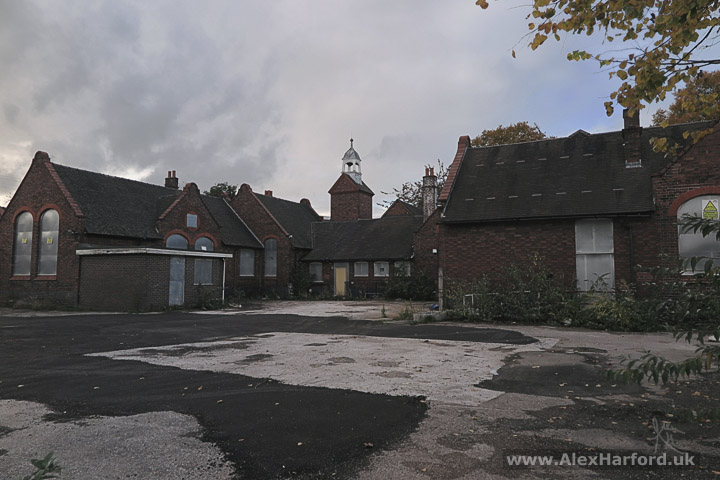
It's not Grade listed as there are other similar buildings throughout the country, so despite the council originally buying the old Victorian building so it wouldn't be demolished, it seems our "historic market town" (as tourist brochures say) will lose another of it's most historic buildings.
There were a number of uses for the building considered, including the relocation of Newcastle-under-Lyme Borough Council to the premises, but the renovation was deemed too costly. It's a shame the idea and review process takes so long, while the building decays and becomes a less viable option - by October 2012 (seven years after the school relocated) the Council had decided to market the building for external use (lifting a covenant that required community use or public access), while also acknowledging its value to the town:
"The Borough Council is now in the difficult position of owning a building it recognises as having townscape, landmark and even historical value but does not now have the resources to refurbish, without the availability of external regeneration funding (from organisations like the NSRP or AWM) and with no obvious demand for the building in its current condition."
It'll be a real shame if the building is demolished - it provides a great backdrop to the Queen's Gardens and Queen Victoria statue, and whatever replaces it will probably have no character or too much "character"...
Just across Barracks Road, the old Jubilee Swimming Baths are being demolished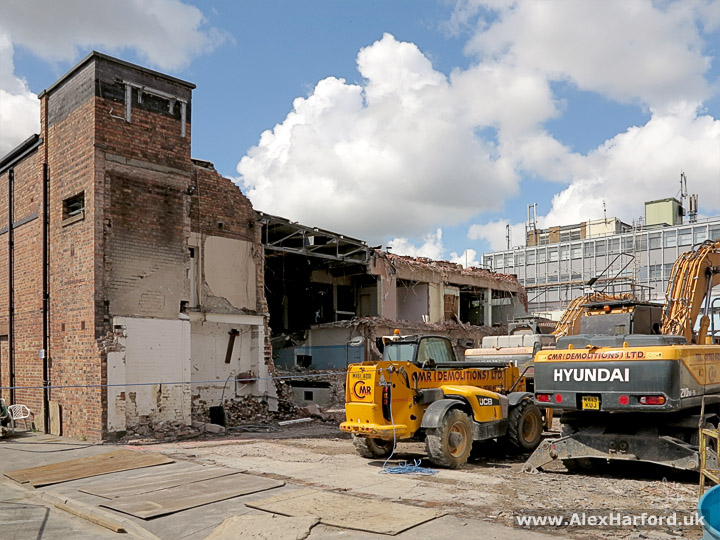
My School Memories
Onto lighter times... I remember walking the 1/2 mile from the school to the fields at Pool Dam for P.E. lessons and sportsday, playing conkers in the yard with horse chestnuts from the resident tree, Mr Meredith and the caretaker, sitting on benches outside playing Top Trumps on breaks, taking it in turns with my best friend to have tuna sandwiches at lunch (I don't like tuna any more), having a fight with a friend over who got next turn on the toy train (it might have been the same friend, and is probably my earliest memory at the school) and years later being so embarrassed that a girl gave me a Valentines card that I threw it in the bin (despite the fact I'd made one for her - hers was better - I cut out a photo of yellow daffodils and stuck it to a card, and she drew a fully-fledged picture. I still remember her name!).
I also remember my mum getting me a gangster outfit (complete with fake moustache) and winning a fancy dress competition at the school - the prize was John Menzies vouchers, which I probably spent on books and Top Trumps.
Other School Memories
Lily Shufflebotham (pictured here as a child), who attended the school in the 1920s, kindly gave me permission to include her reminisces:
"I was a pupil at the 'National' School, as we called it, in the 1920s, until 1934, and those days are still still clear in my mind. We lived in King Street, at the top end, and I used to run down the street to school, across Nelson Place, Brunswick Street and Barracks Road into Bow Street.
"In those early days I had a penny a week pocket money, which I used to spend at the sweet shop by the school - I could get a farthings worth of sweets, saving the other 3 farthings for other days!
"I can remember the cloakroom to hang coats, also the outside toilet block, the big Tree in the yard. The boys school had a tall iron fence between them and the girls, that was on the side by the Queens Gardens. We used to go around at playtime and talk to the boys through the fence.
"Once a month, we children all walked up the Brampton, to a morning service at St George's Church, and the next month we went to St Giles' Church (which seemed a very dark church). Cookery classes and laundry classes were taken at Ryecroft School, and exercises were done in our school yard.
"Once a year, on the first afternoon of school after summer month holidays, we all went to the pictures in Newcastle (The Savoy, Regal or Pavillion - a different one each year) - this was treat given by the Mayor.
"I remember Miss Cooksey was our music teacher. There was a competition in my last year, held at the Municipal Hall, to find which school in the area had the best choir. I was in the school choir on the back row. Henry Wood (English composer, best known from The Proms) came to adjudicate, sitting in the centre aisle of the Hall. Our girl's school won, singing 'Who is Sylvia?' - quite a proud moment.
"Miss Lane was Headmistress when I was at the National...and pretty strict, I recollect. I remember our needlwork teacher, Miss Newcombe (I think I'm right), and the dress I made in my last term, all hand stitched. I loved that dress and wore it out (I still enjoy sewing all these years later). I also remember Miss Brown in my last class - she used to rap your knuckles with a ruler if you did not pay attention, especially to arithmetic, as it was then. My eldest sister had been a young schoolgirl at the same time as Miss Brown, and sat by her - I think they would have been at Hassell Street School.
"I left School at 14 and went to work in Enderley Mills as a machinist, where my mother and father's sisters had worked."
My friend Denise started at St Giles' and St George's around the time I left:
"I remember...
"Collecting leaves from the trees that lined the side of the yard joining the Queens Gardens to use for making batiks with head mistress, Mrs Evans.
"Playing cheerleaders in a school play which required us all to wear black knickers under our netball skirts. My mum couldnt find me any little girls black pants, and brought me boys Y-fronts - embarrassing enough for a pre-pubescent girl - only to embarrass me further by offering said pack of black Y-fronts to the boy I had a crush on after the play was over... Thanks...
"Lots of music related memories. Singing German folk songs on the bandstand, after Mrs Plough found out about my German family. Faking my way through a performance of 'Piccadilly Circus' on violin (I could never get the hang of it, it was too quick). Mrs Humes (the pianist) self-composed songs we sang in assembly. One went 'Milk bottle tops and paper bags, iron bedsteads, dirty old rags...is this what we (clap, clap, clap) really want to see (clap, clap, clap) No! No! No!'
"And most importantly, getting to marry my primary school crush (black pants boy) after being elected Rose King and Queen at a summer festival. We had to hold hands - I was over the moon, he was less impressed. In hindsight, he was the one with snot all over his sleeves... He was punching above his weight..."
Some discarded old photos in the school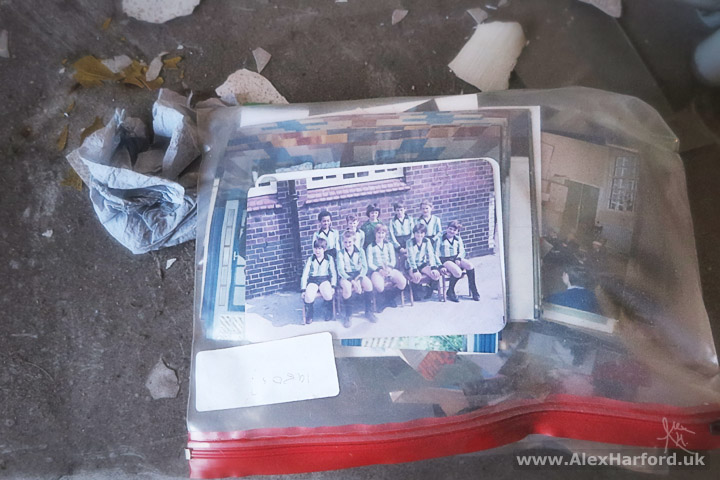
Snippet from The Sentinel:
Being in the centre of Newcastle, St Giles' and St George's School didn't have a lot of room. Pupils at the school, known as the 'National', had to spend a lot of time walking to other places for their lessons because of this lack of space.
"Ryecroft School was used for cookery for the girls and woodwork for the boys," remembers Margaret Litherland, who went to the school in the 1950s.
"We were given the option of crossing over, but as far as I can remember only one boy tried cookery, and that was Howard Kirkham. No girls tried woodwork."
Antony Hales in The Sentinel:
"I was a pupil at St Giles's and St George's School between 1942 and 1953.
"For me and my family, it has many special memories, as my younger sisters Ann and Margaret followed me through school. And our mother, aunts and uncles were also pupils, so it's quite a family tradition.
"The boys and girls were taught together in the infants and then separated for their senior education.
"Children who had school dinners had to go to the Ryecroft School, but I went home, as I lived in Barracks Road.
"Children came into school by bus from all the rural areas, such as Whitmore, Acton and Baldwins Gate.
"On Ascension Day we all had to attend church (being a church school). One year we went to St Giles's and then the next year to St George's."
Various uncredited memories from the 1995 centenary booklet (pictured below):
"When the school bell rang it was time for school to start. When the bell stopped you were late!"
"Paper plasters covered with Gloy were put across your mouth to stop chattering."
"Draughts were so bad that sometimes the gas mantles would break with the cold air."
"The Christmas parties were held in St Giles' Hall at the bottom of Priory Road. Trays of food and jellies were carried down Friars Street after dark, often in snowstorms. Domestic science, woodwork and school dinners were accommodated in the old Ryecroft Board Schools. P.E. and dancing at St George's Institute in Marsh Parade, gardening in Sandy Lane and games at the Pool Dam playing fields. The school became known as 'the walking school'."
World War II memories from the centenary booklet:
"Half of the teaching took place in air-raid shelters, which were sited on the Queen's Gardens side of school.
"Much time was spent rehearsing gas mask drill. The shelters were dark and damp with a bench along each wet wall. There we sang numerous songs, recited poetry, tables, told stories and played talking games. An HMI visitied us one day and said 'Heaven help you if a bomb falls in the locality - the roof has a crack in it.'
"When the temperature was down to freezing, children had to wear hats, gloves and coats. They took it in turns, six at a time, to stand by the open fire. One teacher carried coal from Audley."
History of St Giles' & St George's School,
Newcastle-under-Lyme, Staffordshire
St Giles' & St George's National School was an amalgamation of two other National Schools - St Giles' National School (for ages 5-12) and St George's National Infants School (for ages 2-5).
1895
After a delay completing the building, which led to an extended holiday for pupils, the school was officially opened on Friday 25th April 1895 after a Civic Procession from the Guild Hall to the school.
A Keele University dissertation by Greta M. Maloney reported the cost of the building as £5,150, with £3,750 of that paying the builders and £200 for furnishings.
1896-1897
Livestock grazing land next to the school was bought for £750 with money raised by public subscription. This became the Queen's Gardens, a public area that commemorated Queen Victoria's Diamond Jubilee.
The land was bought to appease residents who protested against the new school building, worried that this land would be built on too.
1915A postcard of Queens Park (as it was known) and the school, from around 1915

1935
Enquiries were made to purchase the land the school was built on for use as Municipal Offices.
Three years later (it seems these sort of decisions have always taken a long time), the Council decided they didn't need the site.
1939-1945
The school stayed open during the war, with much of the teaching taking place in dark, damp air-raid shelters next to the Queen's Gardens.
1945-1946
In October, electricity was installed, paid for by fund-raising from the staff.
Classrooms were only allowed one 60-watt light bulb, but after complaints by a sewing class (who used the building in the evening) and a HMI (Her Majesty's Inspector) report, where a teacher asked the inspector to read a bible by her desk - he couldn't - improved lighting was eventually installed. This was almost a year later following more fund-raising, after the Local Education Authority refused to fund the upgrade.
1947
The school was closed for 3 weeks due to a lack of fuel.
School leaving age was increased to 15. In an already-congested building, to accommodate more pupils, two senior girls classes were moved to St John's School.
1948
Two temporary classrooms were built on the yard (and were still in use 50 years later).
A dividing wall on the yard was removed after the girls' and boys' schools were combined.
1965
St Giles' & St George's was one of the last all-ages schools in England. Secondary education was no longer provided here after Ashfields Secondary Modern School was opened.
1973
More talk of demolishing the school, this time to make way for a new dual-carriageway.
1982
Proposals were made to close the school due to a fall in pupil numbers. Parents launched a campaign and eventually the school was saved.
1988
I was at the school now! More importantly, parents saved it again after campaigning against plans for a large town-centre development that included a multi-story car park. I was probably completely oblivious to all of this.
1990
The big horse-chestnut tree was removed from the yard as it's roots were damaging drains and foundations.
1995
Centenary celebrations included a service at St George's Church and a procession around Newcastle town centre.
Indoor toilets were built, the outdoor block dating from 1895 demolished.
Windows were replaced with double-glazed sections and the electricity of the whole school was rewired, with the addition of a new fire-alarm system.
Centenary booklet from 1995
2005
St Giles' & St George's Primary School moved to new premises in Poolfields.
2012
Various plans for the building didn't come to fruition - usually due to the lack of funds to renovate it. These include relocating the Borough Museum and Art Gallery from the Brampton, an indoor market, a centre for creative industries or headquarters for Choice Housing. Demolishing the building was considered a "last resort".
2015 (120th anniversary of the building)
Proposals are being drawn up for the redevelopment of the old Sainsbury's and current civic office sites, which would see the creation of "a joint civic hub", with the police and county council, on the former school site.
Newcastle Council hope to announce a date for the start of the works this year.
2016 :(
"Controversial plans to demolish a former school and build a new council hub in its place have been approved by councillors. The 19th century St Giles's and St George's school will now be bulldozed and replaced with a new state-of-the-art building..."
Last minute plans to move the building brick by brick to the south of England didn't materialise, as the school was demolished in haste.
Demolition of St Giles' & St George's School took place in April 2016. The school is pictured here from the Queens Gardens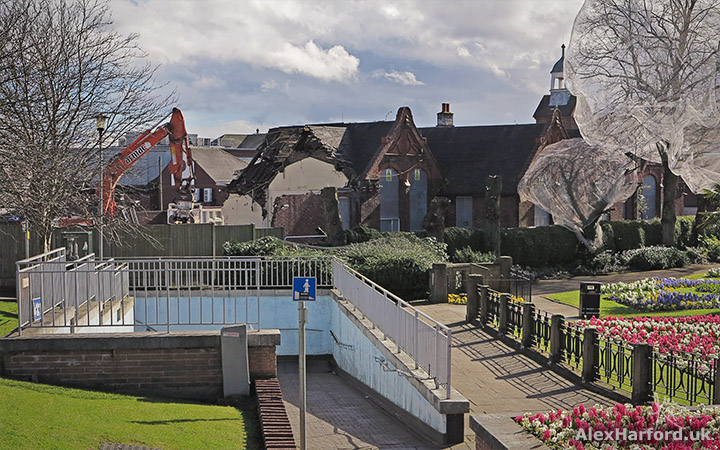
The school building and foundations were considered too expensive to repair due to a natural spring beneath the building. The pump that cleared the water had been switched off years previously.
2017
The new building, Castle House, was due to open in October 2017, but ironically, the opening was delayed until months later thanks to water damage on the cladding.
Do you have any memories of the old school? Were you at the 100th anniversary celebrations? Should the building be saved? Feel free to leave a comment! (No registration required).
Back up to: Photos Former pupil memories School history Leave a comment
Thanks to Newcastle Library's staff and their Local Studies area for most of the historical information.



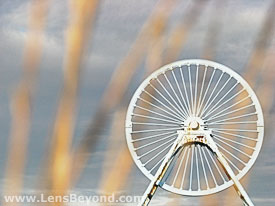






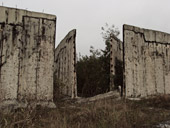
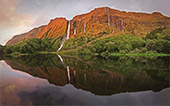



Comments